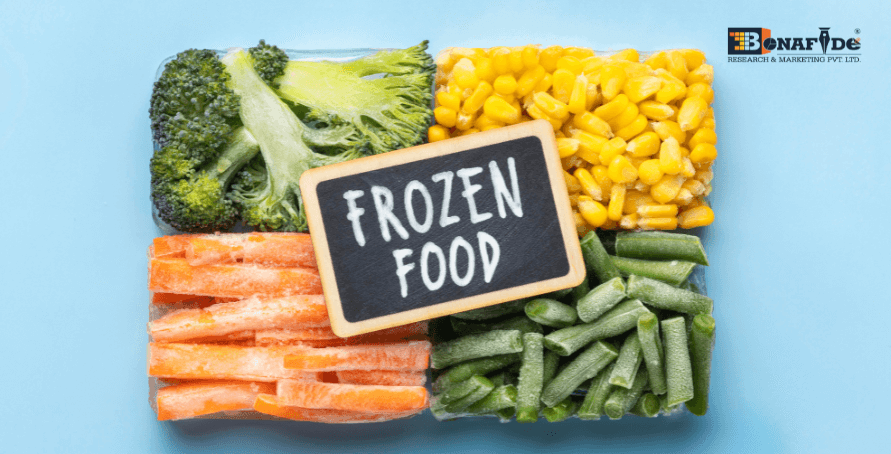
The expanding interest and demand for high-value animal protein and comfort ready to eat food items drive the frozen meat market. The advancement in processing, innovations, and technologies has prompted the presentation of various items in the market, consequently guaranteeing a greater consumer base. Frozen meat products have probably the largest adaption observed among the consumers. Consumers prefer meat mostly due to the protein contents that it provides to the body however, it is depleted when the meat is in direct atmosphere contact for a longer time. On the other hand, freezing the meat makes it less messy and keeps it fresh for the consumption. These meat products include forms of preserved beef, chicken, pork, etc. The growth of online retail outlets and offline stores, in most of the developed economies, has boosted its demand. The top three regions contributing the highest share in the market are Asia Pacific, Europe & North America out of which Asia-Pacific recorded the fastest growth with a prominent CAGR. Manufacturers in the market have been alluring the customers with an innovative range of packaging such as tear-notch openings, sealable zippers, and single-serve packaging. The manufacturers in the market of frozen meat are largely dependent on the cold storage infrastructure. Along with these key players in the market are collectively focusing on enhancement or production methods. These players adhere to quality standards & production safety.
According to the research report, “Global Frozen Meat & Poultry Products Market Outlook, 2029”, the growing preference will allow the Global Frozen Meat & Poultry Products market to pose the expected growth of above 4.7% by 2029. Consumers' high inclination towards consuming frozen meat is going to incur rapid sales in the light of changing consumption patterns. Increasing at home socialization, on the move food, wide acceptance of healthy food habits is surely going to drive the market during the upcoming timeframe. Given consumption, the foodservice segment is assessed to represent the biggest offer in the frozen food market in the current period and the future as well. The foodservice industry incorporates eateries, quick-service restaurants, bars, lodgings, and human healthcare. Among these, QSRs rule the food service business in the frozen food market because of the high commitment and with increasing numbers of outlets in the Middle East and African region. The foodservice industry utilizes frozen food things all the time to spare time in cooking; this decreases the time taken by the food items to arrive at the clients' table. Frozen food has both quality and taste; henceforth, it satisfies client desires. The global frozen meat and poultry market is witnessing substantial growth, driven by rising consumer demand for convenient, protein-rich, and long-lasting food options.
Freezing helps preserve the nutritional value, texture, and taste of meat and poultry while extending their shelf life, making them a preferred choice for both households and the foodservice industry. Factors such as urbanization, busy lifestyles, and increasing disposable incomes have fueled market expansion, as consumers seek quick and easy meal solutions without compromising on quality. Technological advancements in freezing techniques, cold chain logistics, and vacuum-sealed packaging have enhanced product safety and reduced food wastage. The foodservice sector, including quick-service restaurants, hotels, and catering businesses, relies heavily on frozen meat and poultry due to their convenience and cost-effectiveness. Additionally, the growing trend of protein-rich diets, ketogenic lifestyles, and rising meat consumption in developing nations has further accelerated market demand. While North America and Europe dominate the market due to established supply chains and high consumer preference, Asia-Pacific and Latin America are emerging as lucrative regions, driven by increasing meat consumption and expanding retail networks. As consumers prioritize hygiene, traceability, and sustainability, the frozen meat and poultry industry continues to innovate to meet evolving demands.
The global frozen meat and poultry market is expanding across key regions, with varying demand drivers and consumption patterns. In North America (USA, Canada, Mexico), the market is driven by high meat consumption, a strong cold chain infrastructure, and increasing demand for convenience foods. The U.S. leads in both production and consumption, while Canada and Mexico are experiencing growing demand due to rising disposable incomes and urbanization. In Europe (UK, Germany, Spain, France, Italy, Russia), frozen meat and poultry are widely consumed due to busy lifestyles, strong retail networks, and growing preference for high-protein diets. Germany and the UK are key markets, with increasing demand for organic and antibiotic-free meat. Russia, with its harsh climate, relies significantly on frozen meat imports. South America (Brazil, Argentina, Colombia) is a major exporter of frozen meat, particularly beef and poultry, due to strong agricultural industries. Brazil leads as a global meat supplier, while Argentina and Colombia see rising domestic consumption. In Asia-Pacific (China, Japan, Australia, India, South Korea), demand is surging due to urbanization, rising meat consumption, and expanding retail chains. China and Japan are dominant consumers, while India and Australia are emerging exporters. In the Middle East & Africa (UAE, Saudi Arabia), growing demand for halal-certified frozen meat, urbanization, and an increasing foodservice sector are fueling market growth, with imports playing a significant role.




























 We are friendly and approachable, give us a call.
We are friendly and approachable, give us a call.